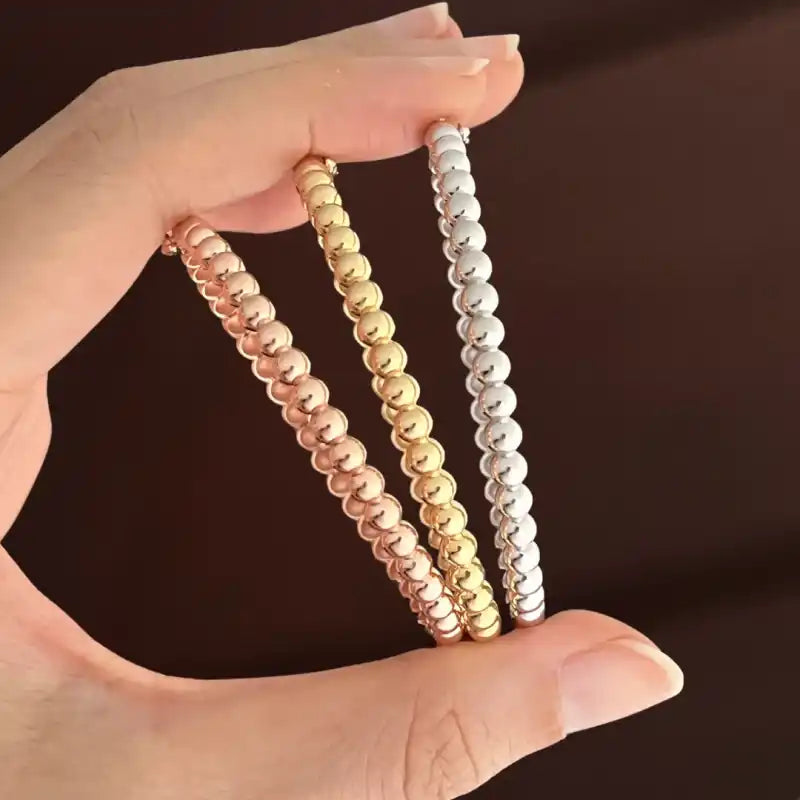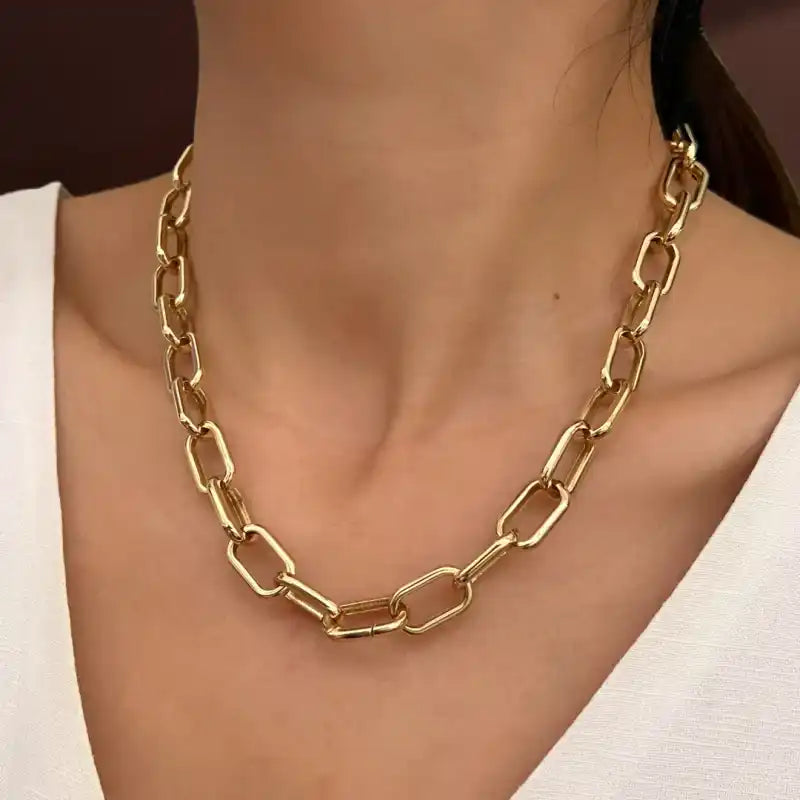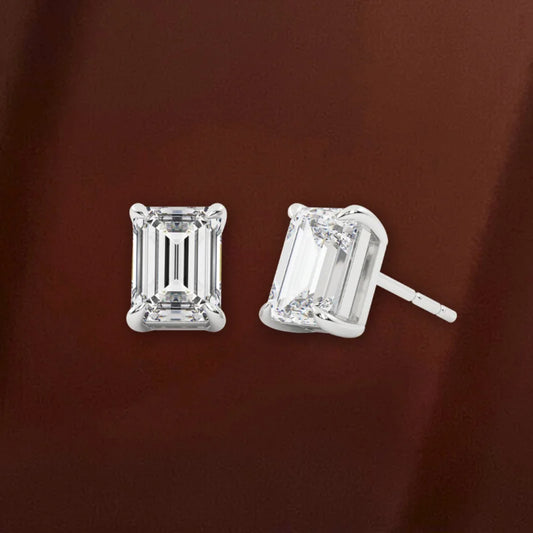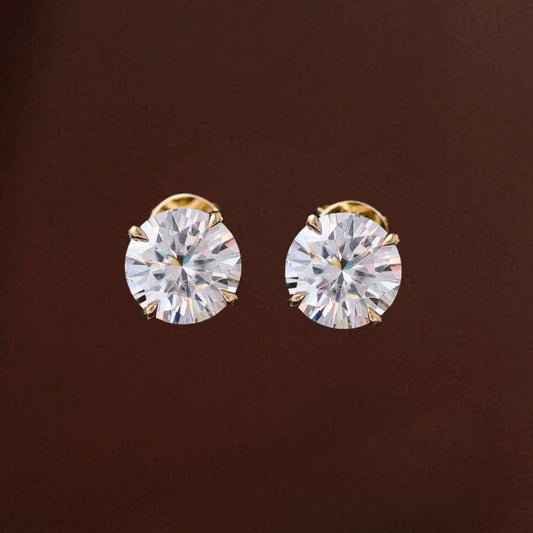Making diamonds an everyday affordable thing.
Lab-Grown is the New Luxe
We proudly use Lab-Grown Diamonds, Lab-Grown Precious Gemstones & Moissanites in our fine jewellery collection. Not mined nor 'blood' diamonds.
As members of the wider community and shared inhabitants of the earth, we believe that we have a responsibility in choosing the path of sustainability. Our founder, Mag, also happens to be very practical - offering what makes sense for the earth, the community and your wallet.
No Mining
Mined gemstones often come from a very unbalanced supply chain, raising ethical and environmental concerns. The good news is: you can enjoy the same diamonds and gemstones with their Lab-Grown twins.
Thus we offer only ethical, sustainable and fairly-priced alternatives. We use lab-grown diamonds, gemstones and moissanites of the finest quality. Lab-grown diamonds and gemstones are identical to those found in nature, minus the bad stuff of mining. Moreover, they are a fraction of the cost of the mined ones (one third!) because they are produced and priced competitively. That simple.
We also craft our jewelry with other Lab-Grown Gemstones like Rubies, Emeralds, and Sapphires. These are likewise identical to those found in nature. But because these are grown in a lab, we get to select those of highest quality and best in colour, e.g. blood red rubies and royal blue Sapphires, which may be rare in nature. We do not use synthetics, which are a class of imitation stones made with cheaper components and less valuable/durable.
Moissanites are valuable precious gemstones that have the same appearance and properties as diamonds (lab or mined). We also use Moissanites because they are simply the best of simulants around in the market (as opposed to say, cubic zirconias), they last forever, and has its price appeal.
Is it Man-made?
Well, the correct word is “lab-grown”. These diamonds are grown from an actual diamond seed. It wasn’t magically concocted in a test tube!
It was grown in a lab, given the right conditions. A common industry analogy is “IVF baby”. Wouldn’t call it man-made, but definitely facilitated. Someone called it “amazing science”. Indeed!
How we started...
In our early days, we started with the most basic of diamond simulants in our fine jewellery collection: Cubic Zirconias. These are highly affordable and accessible stones, widely used in fashion pieces & some solid gold jewelry. However as we grew, we heard your desire to have higher grades of ‘man-created’ alternatives for our fine jewellery collection: better colour, clarity, hardness, and stones that will not dull over time.
Today, we are proud to have stepped up to offer 2 of the finest-quality, guilt-free and affordable bling in the market, as well as lab-grown precious gemstones like Sapphires, Alexandrite, and Emeralds. Most of our fine jewellery collection can be made for you with either of these types:
- Lab Grown Genuine Diamonds - first, diamonds are diamonds. Lab-grown diamonds are 100% genuine diamonds (not ‘simulants’). They may not be ‘earth grown’, but are real diamonds with the exact same chemical compound (pure carbon) and molecular structure of mined diamonds. Lab-grown diamonds are grown from actual diamond seeds. The growth process is sped up by the highly controlled conditions within a lab. Then they are cut and polished by the same diamond cutters. The properties, qualities and hardness of the two are 100% identical. They are known in the market as "CVD" or "HPHT" diamonds.
They are also identified and created to the same Hardness, Colour & Clarity grading standards as naturally-mined diamonds. The only difference is growth: one is grown in a lab from an actual diamond seed and the other is grown in nature and then mined. The mining process is often unethical and unenvironmental.
Professional gemologists would find it difficult to tell them apart because they are identical. You can buy and wear lab-grown diamonds with the peace of mind that these are genuine diamonds, everlasting, guilt-free, and fairly priced.
Be mindful of "=diamond simulants" being marketed as same as "lab-grown diamonds". They are not the same. If a retailer markets its product as a “diamond stimulant” without stating its true origin, it is most likely a Cubic Zirconia stone. A “lab-grown diamond” would be called exactly that. And it’s always set in real solid gold—14K 18K 22K with no other base metal.
- Moissanites - these are the finest quality of colourless gemstones made of Silicon Carbide. They are rare precious gemstones, that appear the same as diamonds - in fact, they would pass a diamond tester. Moissanites came to earth as a meteorite (true story!), they were discovered and continue to be extremely rare in natural form. Now, these are created under lab conditions and utmost precision to produce maximum fire and brilliance.
There are other cheap diamond simulants in the market (e.g. Zirconium Oxide or Cubic Zirconia or CZs), but Moissanites surpasses all in value, hardness and durability. It is also more difficult to grow. It is therefore more expensive. Sometimes retailers do not clearly state the material, so it's good to check what you are paying for, especially if you want them as heirlooms.
With a rating of 9.25 on the mohs hardness scale, they are almost similar to diamonds in terms of hardness (10 moh), which makes it scratch proof and able to keep its sparkle. (*By comparison, Emeralds, Sapphires & Cubic Zirconias are only rated 7.5-9 moh in hardness.) Cubic Zirconias being softer, may scratch and dull over time if not taken care of properly.
Moissanites have even better brilliance and colour than the average diamond in the market, and are equally able to stand the test of time in heirloom jewelry due to its extreme hardness & quality.
Do they pass a diamond tester?? There are many diamond Simulants in the market. And many don’t. Moissanites are one of the few precious gemstones that DO pass a standard diamond tester, which is why they are used in engagement rings nowadays as the main stone, as a an eco- and wallet-friendly replacement to diamonds. They are now gaining widespread popularity amongst environmentally-savvy and ethics-conscious millennials, with many of them using Moissanites to create heirloom jewelry and wedding rings. Best of all, it is considerably cheaper compared to lab-grown diamonds and multiple times cheaper than mined diamonds.
- Lab-Grown Emerald, Ruby, Sapphire & Alexandrite: Like lab-grown diamonds, lab-grown coloured gemstones are 100% identical to mined equivalents in every way, except origin. I.e. same same structure, hardness, colour, and clarity. They are also cut with the same tools. In nature, sapphires and rubies are made of corundum, emeralds and alexandrites are made of beryl. Our coloured gemstones are meticulously grown in a lab to produce an end result that is chemically and structurally identical to what's found in nature.
These are not the same as "synthetic" or "simulated" gemstones. Synthetic and simulated gemstones are chemically different from its original natural form, as they are manufactured with substitute materials like cubic zirconia, adding artificial colours as desired.
- CZ Diamond Simulants: These are a basic form of simulants made of Zirconium Dioxide. They are widely produced and used in fashion jewelry for its affordability and brilliance. In tiny settings (1mm or less), CZs add amazing brilliance to your jewellery. They have a hardness rating of 8-8.5.
Some of our earlier fine jewellery designs still use CZs in very tiny settings (1mm or less). CZs has its price appeal. We do not use large CZs in our fine jewellery as they are less appropriate as heirlooms. Please note that large CZs are commonly marketed as “Diamond Simulants” and often set in gold-plated sterling silver. We use CZs for our demifine goldfilled collection too.
No Mining
Mined gemstones often come from a very unbalanced supply chain, raising ethical and environmental concerns. The good news is: you can enjoy the same diamonds and gemstones with their Lab-Grown twins.
When considering the opportunity cost of purchasing and owning mined diamonds, one cannot help but imagine the exploitation, conflict and environmental impact that mining creates (‘Blood Diamonds’). Plus, the highly controlled and inflated economics surrounding mined diamond industry (made of cartels) makes the price of diamonds artificially expensive.
At Lady Estere, we strive to offer you the finest of alternatives that minimize impact to our earth and its communities, and which are fairly priced.
Are Lab-Grown Diamonds Real?
It's a common myth that Lab-Grown Diamonds are fake. However, these are technically speaking not fake (we're not talking about simulants here). It's grown, like a natural diamond with the same chemical element (carbon). Grown from a diamond seed crystal (carbon) and the lab creates an environment to mimic nature (high heat, high pressure) to accelerate the formation of a real diamond. That makes it as real as a mined diamond.
In nature, diamonds are formed from a carbon and crystallized under intense heat & pressure. It's a very long process that man has managed to accelerate in a lab.
Are Lab-Grown Diamonds as sparkly as mined diamonds?
Yes! Lab or mined, diamonds are diamonds. Lab grown diamonds are grown to the same colour and clarity grading as mined diamonds, using the same conventions (e.g. DEF/VVS). So like mined diamonds, you have the high grade lab-grown diamonds (colourless, very very slight inclusions) and the lesser grades one.
They are all also cut to shape with the same tools and professionals.
Will it lose its shine more easily?
No. Lab-growns are the same material as its earth-growned counterparts. So it will not lose its shine faster than the earth-growned ones. Neither will Moissanites. All materials—lab or earth—and even moissanites can collect dust and dirt from daily wear, and that results in an apparent loss of shine. But nothing that a cleaning/washing can’t fix.
Can Lab-Grown Diamonds be certified?
An IGI certification can be provided for lab-grown diamonds 0.5 cts and above, for an additional fee. You will be provided documentation from an objective third-party grading lab (IGI) that identifies and describes the characteristics of the diamond. Please let us know if that is a requirement.
Which to choose: Mined Diamonds vs Lab-Grown?
It's a no-brainer! :) Lab-grown alternatives are:
- Ethical & Conflict Free
- No Environmental Damage (not mined from the earth!)
- Fairly Priced (no cartels involved)
- Finest & Highest Quality: Lab-Grown Diamonds are considered genuine diamonds. Precious gemstones like Moissanites are extremely close in terms of properties and appearance.
Which to Choose: Lab-Grown Diamonds vs Moissanites?
Both are man-made & sustainable. Now, if you asked us - which one should you choose - Moissanite or Lab-Grown Genuine Diamonds? That would depend on your budget and expectations. Both are considered the finest quality alternatives to mined diamonds. If the prestige of genuine diamonds appeals more to you, then select the Lab-Grown Diamonds option.
If you prioritize "value for money" over "prestige", then Moissanites are the way to go. They are still valuable as precious gemstones in its own right.
If you ask Mag (our founder) what she'd choose to buy for herself to keep as heirlooms: It will be Moissanites. It's a no-brainer since the properties of both are almost identical.
BUT most importantly: You do YOU, because we’re here to serve you. ☺️
Shop Fine Jewellery
Shop Lab-Grown Gemstones
-
Twin | Double Emerald Cut Necklace & Stud Set (Solid Gold)
Regular price $2,069.00 SGDRegular priceUnit price per -
Soleil | Emerald Cut Moissanite Studs (Solid Gold)
Regular price From $959.00 SGDRegular priceUnit price per -
Soleil | Round Moissanite Studs (Solid Gold)
Regular price From $489.00 SGDRegular priceUnit price per -
Twin | Double Marquise Cut Necklace & Stud Earrings (Solid Gold)
Regular price $2,069.00 SGDRegular priceUnit price per









